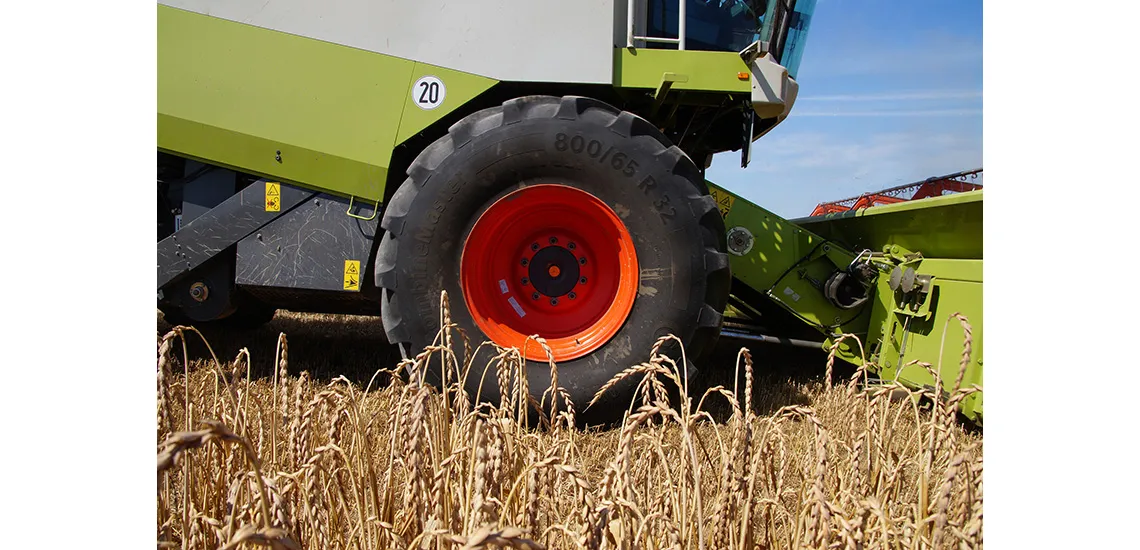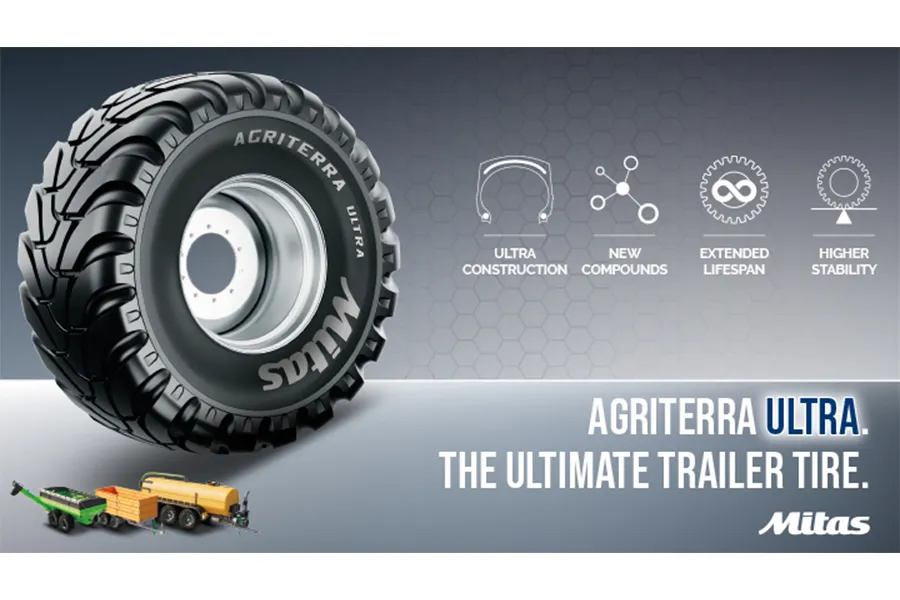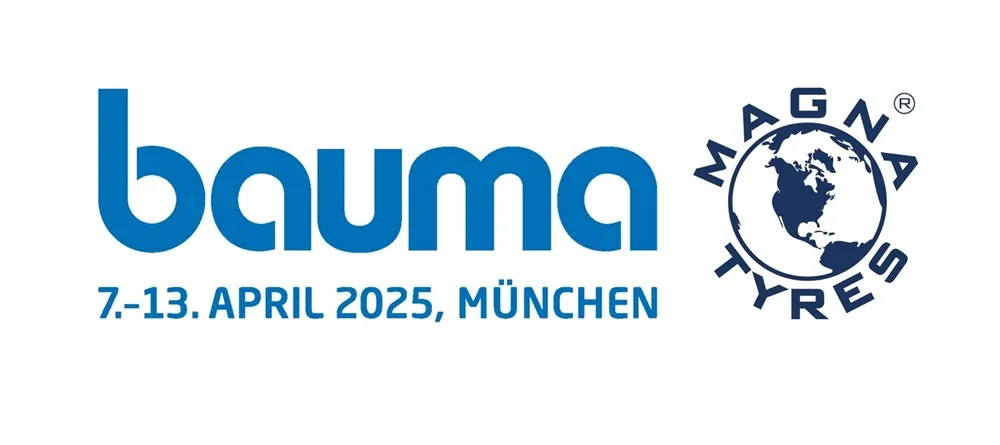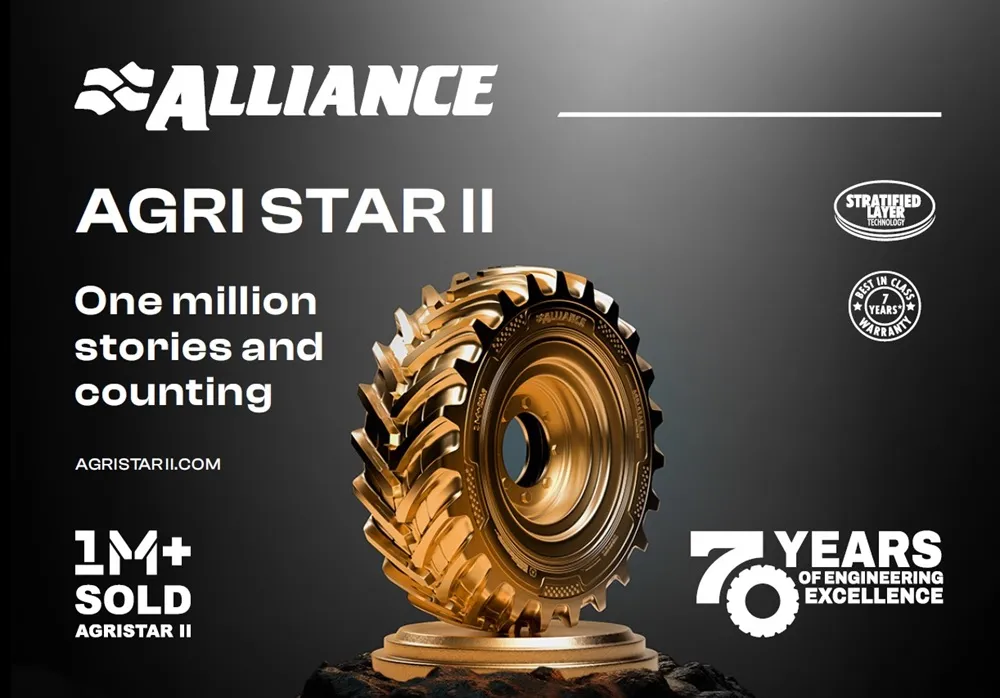Continental CombineMaster tyres can now be specified with ContiPressureCheck, a new system that monitors the pressure and temperature of tyres to provide the operator with the necessary information to prevent tyre related issues, such as underinflation or overloading.
ContiPressureCheck by Continental
During previous harvests, tyres may have been damaged causing bulges, cuts, or tears. “A thorough check of the tread area and sidewalls, including the rim of the wheel, will identify any areas of concern. The low operating pressure and requirement to carry a heavy load creates strain on the tyre wall, so if there is a fault the tyre should be changed to avoid operational failure and down time,” says Continental’s agricultural tyre specialist Richard Hutchins.
Flat spots can occur when a combine is parked for long periods. “Flat spots are common with combines because of the length of storage time. Investing in a tyre with a more flexible carcass material will help,” he says. N.Flex Technology in Continental tyres is a patent pending, heat-treated nylon that sits beneath the rubber to help the tyre return to its original shape following impacts and heavy use. “N.Flex reduces the occurrence of flat spots and provides a more comfortable ride,” he adds.
Continental has developed a stronger single wire bead with a hexagonal cross section – the Hexa bead. The bead is an essential part of a tyre because it keeps the tyre on the rim of the wheel. Many agricultural tyres use as many as ten individual wires to create one bead. However, multiple joins in the bead can cause weaknesses and there is a risk that the tyre can detach from the rim, especially at low pressures.
“Our research showed a more flexible tyre, with a stronger Hexa bead construction, will grip the rim even at very low pressures. This reduces the risk of the tyre slipping off the rim, whilst helping to spread the huge weight of a combine. This is especially important for the front tyres which take more weight and torque,” he explains.
ContiPressureCheck can be retrofitted to existing tyres or specified with new CombineMaster tyres. “This technology is the future and offers farmers an opportunity to reduce soil compaction and avoid costly tyre failure,” concludes Mr Hutchins.








